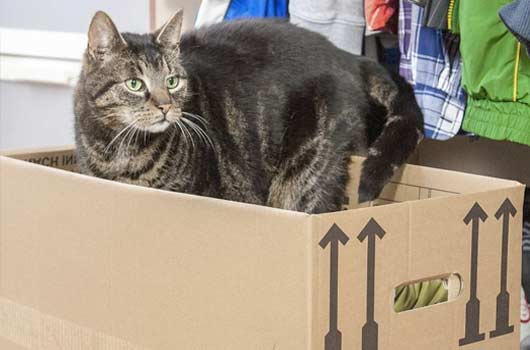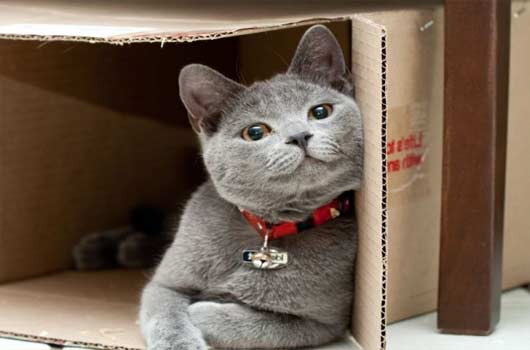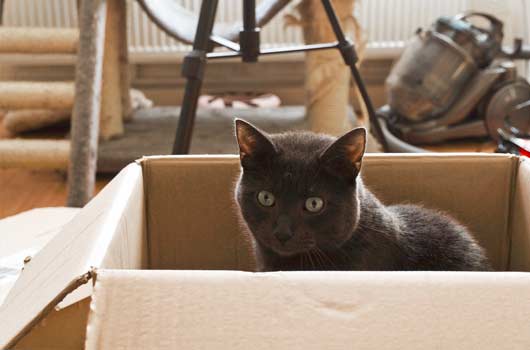Moving home with cats - advice and tips
It has been established that moving with pets can be the most hectic thing when it comes to relocation. Yes, you can move yourself and your properties comfortably and you can always move your kids who are intelligible and reasonable. But you will find it very difficult to move cats.
Now, let me tell you one thing. It is not impossibility. In fact, if you know the way to do it, moving with a cat can be one of the most exciting aspects of the removals. You simply have to learn and apply the principles.
One of the major problems about moving with a cat is that cats and indeed many other animals are territorial in nature. Once they are accustomed and attuned to a particular environment, they find it very difficult to move out of that environment and adapt to a new environment. Because of this, you have to learn how to manage their territorial nature.
How to relocate with a cat? - things to do on the moving day
Before the Removals London man start the packing and loading, you have to quarantine your cat to a particular room in the house. Make sure the room is locked and kept under restriction. The best way to do this is to shut both the doors and windows. When you do, insure that food, water, bed and litter tray are all dropped in the same room.
The cat should remain here while the packing for moving is going on. When the packing is complete and you are about to go, move the cat into the carrier and move the carrier into the car. It is when you must have moved the cat into the car that you can now move out the furniture in the bedroom or the cat’s room. You have to use furniture so as to get the cat to be at home because of what it is used to in the past.
Before you move, you have to insure that your cat is not transported in the boot of a car or even in the removal van. When you are moving house with a cat long distance with your car, you must have to observe the small breaks when the cat stretches itself. At this stopover, you have to offer food and water to the cat if the cat is interested. Remember to give your car adequate ventilation, especially if you are moving on a hot day. When you stop over for the break, never leave your cat inside the car alone.
The reason the bedroom furniture is placed last inside the van is that it will be the first to be removed, and this must be the case, because when you move with a cat a new home, you need to organize the bedroom into what the cat is used to before you move the cat inside. You can use a synthetic feline facial pheromone diffuser inside the room before moving in the cat. However, when you are through with organizing the room, you have to bring your cat in and place her on the bed. You may designate a family member to watch over the cat till the cat acclimatizes and adapts. You must also shut the doors and windows to the cats’ room.
Moving a cat to a new home
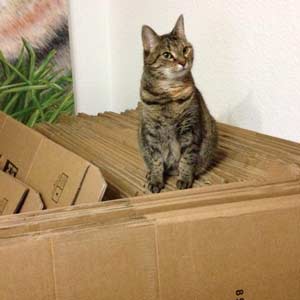 When you place your cat in the makeshift room, offer the cat some food, and allow it to explore the room. However, whenever the removal is through, you can now give your cat the chance to run around and explore the whole house.
When you place your cat in the makeshift room, offer the cat some food, and allow it to explore the room. However, whenever the removal is through, you can now give your cat the chance to run around and explore the whole house.
Watch out to see if there are signs of anxiety in the cat. Just relax and it will help your cat to relax. When your cat moves to the sitting rooms, utility and kitchens, move with your cat to avoid damage to appliances, as they will always like to hide under these if they feel anxious. If the anxiety is much, you can take your cat to the cattery at least for a day or two.
When relocating to a new home with cat, you need to help it settle down by keeping the cat indoors for at least two weeks and feeding the cat with frequent small meals from time to time. Make sure you come at the exact time each time you want to feed the cat, and try to condition the cat on this time. Maintaining the former routines you devised in your old house will also help the cat to relax and adapt to the new environment. To get more organized you can check our moving house checklist.
After two weeks, it will be time to let your cat outside. Here, you have to insure that the cat has proper identification before you ever let it out. The tag the cat should be carrying on the collar should read the name of the cat, the cat’s address and even you own phone number. This will be necessary only if the cat is not micro chipped. But, you have to inform the local registry to effect the change of address and number.
At this juncture, you also have to check the cat’s vaccination to insure that everything is in order and that it is up to date. One other thing to do when moving house with a cat is to fit a flap on your doors. This should be when the cat has adapted, and it should be electronically controlled and made exclusively for your cat to avoid other cats using this to enter your house indiscriminately. You will also help your cat to secure its territory by chasing away all other cats coming in. Let your neighbours know your are moving to a new home with a cat. You can give the cat a work around the garden if it cherishes this. However, you do not need to force it as it should be the one to choose if it wants to explore. When out, leave the door to the room open, so that it can escape indoors once it encounters something strange.
Tips for moving house with a cat
You need to know your cat may run back if you move to a nearby place. If you are moving to London you can be sure that when your pet is missing the first place to start searching for it is your old house. Just instruct the new occupant of the old home to always chase the cat back to you when it goes there, and that they should not encourage the cat by feeding it.
Other things you should be informed about when you are moving house with a cat is that if your cat is one that is normally indoors in your former home, you can actually manage the cat by stimulating some behaviours in the cat. For instance, you can start hiding dry food around the house, so as to provide veritable opportunities for the cat to hunt.
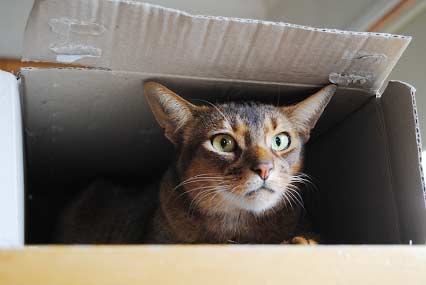 You also need to make spots available where the cat can scratch itself when the need arises by making vantage points available. This should also include climbing posts.
You also need to make spots available where the cat can scratch itself when the need arises by making vantage points available. This should also include climbing posts.
You can also encourage exercises for your indoor prone cats by engaging the cats in some regular predatory play sessions.
Make this a routine at least once every day. You can also introduce items like paper bags and boxes to the cat to explore. We offer removals Bexley and all Greater London.
One more advice is that if you have been living in spacious and huge apartments in the past and now wants to move to a very smaller apartment, your cat may find it difficult to adapt. In this case, you have to provide enough beds, scratching posts, litter trays, water bowls, food bowls and some high resting platforms. Make sure the cat has everything she needs irrespective of the size of the new home.
For more tips for moving house with a cat please contact our office. We can email you our moving home with cats guide. We can also give you some good advice once on the phone. There are also many websites with a list of thugs to do when moving with a cat.
